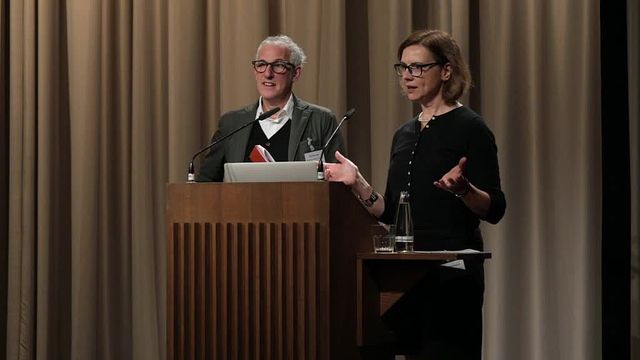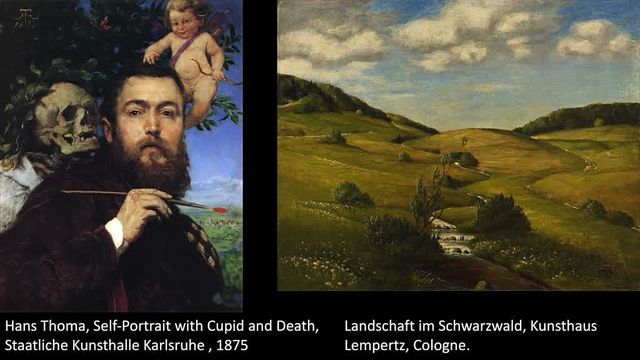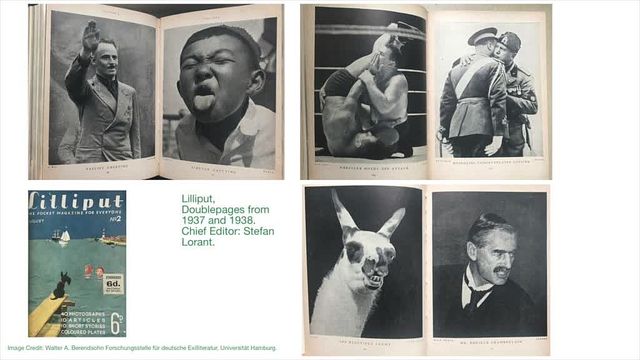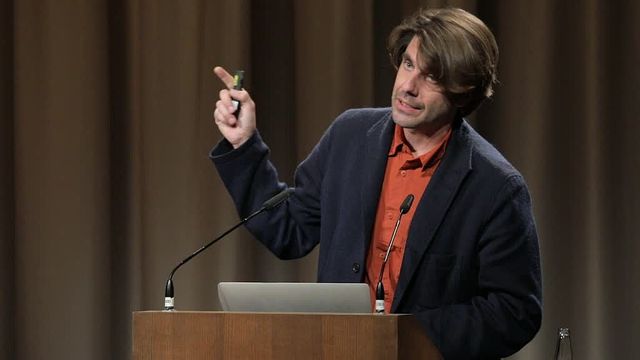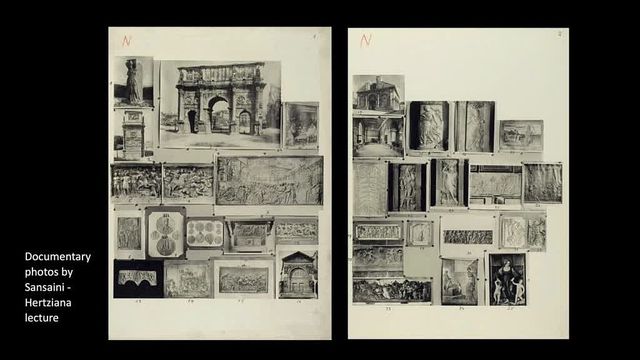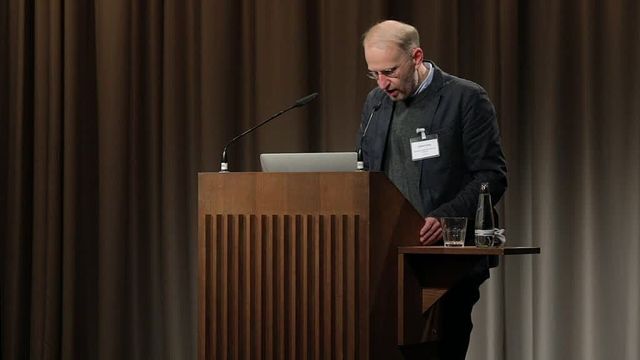Conference: Bilderatlas Mnemosyne
With Burcu Doğramacı, Steffen Haug, Eckart Marchand, Johannes von Müller, Elizabeth Sears, Bill Sherman, Matthew Vollgraff, Claudia Wedepohl
The conference will be recorded and made available in HKW’s Mediathek.
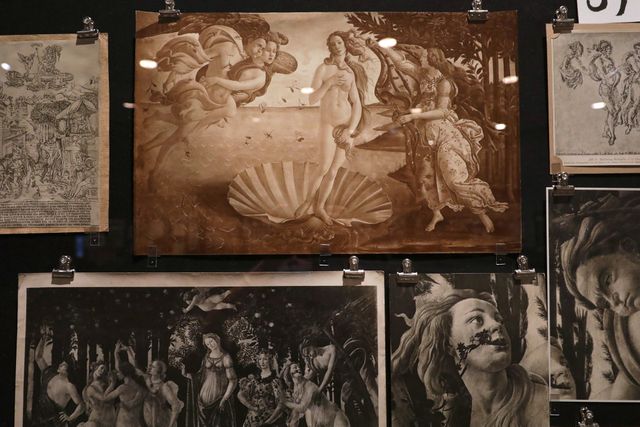
Aby Warburg’s research approach was interdisciplinary, collaborative and international. What concepts came about due to his open assessments of artists such as Domenico Ghirlandaio and Albrecht Dürer? What significance did thinkers and researchers like Ernst Cassirer and Gertrud Bing have for the “workshop” in which the Bilderatlas Mnemosyne took shape? Scientists and curators discuss the concepts that were developed there and how they continue to influence contemporary art history and visual studies.
Day 1 | Day 2
Photography and Exhibitions
11 am
Welcome, introduction
Bill Sherman, Claudia Wedepohl
11.15 am
Before the Atlas. Exhibiting Cultural History in Wilhelmine Germany
Matthew Vollgraff
Lecture
Over a decade before Warburg began work on his atlas, two international exhibitions with with a strikingly similar approach took place: on the history of hygiene (Dresden 1911) and on the development of scientific images (Leipzig 1914). Both were curated by the Leipzig medical historian Karl Sudhoff, whose work Warburg knew and admired. Sudhoff sought to elucidate medical and scientific history in tandem with art and cultural history. The exhibitions testified to this ambition and consisted of assemblages of photographic reproductions (some provided by Warburg himself) recalling Bilderatlas Mnemosyne in form as well as content. What was the relationship between the atlas and these exhibitions? What were their diverging aims and understandings of history?
12 noon
Aby Warburg’s Dürer Exhibition at the Volksheim in 1905
Eckart Marchand
Lecture
In 1907 Aby Warburg published a text on recent and forthcoming exhibitions at the Hamburg Volksheim, mentioning his Dürer exhibition of 1905 in the Volksheim’s Annual Report. This occasional piece came to unexpected fame when, after Warburg’s death, Gertrud Bing included it in Warburg’s Gesammelte Schriften. As a result, the Dürer exhibition is relatively well known, while Warburg’s contributions to the Volksheim’s earlier exhibitions has been overlooked. What was Warburg’s role and agency in the staging of exhibitions in 1902? What is the significance of the Dürer exhibition in this, its original context? Rather than acting on his own, Warburg collaborated with others, as some of his sketches from that period show. What was the impact of these early curatorial experiences upon the designs of his later image series and the panels of the Bilderatlas Mnemosyne?
12.45 pm Q&A
1.15–2.45 pm Break
2.45 pm
Image Politics of Resistance: Exhibitions of the Exile Association 'Free German League of Culture' in London in the 1940s
Burcu Doğramacı
Lecture (via video)
In 1942, the exhibition Allies Inside Germany opened in an empty London shop. The show was organized by the Free German League of Culture. Its aim was to make the resistance in Nazi Germany visible and convince visitors that they had potential allies in Germany. Allies Inside Germany primarily utilized picture panels with photographs mounted on them about the rise of National Socialism and the resistance against it. The artist John Heartfield, who fled to London via Prague in 1938, produced the panels. Allies Inside Germany later toured successfully through cities such as Birmingham, Glasgow and Manchester. What image politics did these exhibitions employ? What is their relationship to the simultaneous shows at the Warburg Institute in London?
3.30 pm
A Tele-Visual History: Exhibitions after the Bilderatlas
Johannes von Müller
Lecture
After its arrival in London in 1933, the Warburg Institute conducted a series of photographic exhibitions. In doing so, the Institute’s staff relied on the experience of working in Hamburg alongside Aby Warburg on his Bilderatlas. In contrast to the atlas though, the photographic displays were in fact planned as exhibitions, designed even to be sent on tour and to address an unusually wide audience. Which are the new perspectives on the Bilderatlas that the exhibitions curated in the aftermath of the Institute’s emigration promise to offer due to such crucial differences?
4.15 pm Q&A
4.45–5.15 pm Break
The Atlas as Workshop
5.15 pm
Warburg’s Hertziana Lecture, January 1929: The Documents
Elizabeth Sears
Lecture (via video)
Documents in the Warburg Institute Archive allow us to follow Aby Warburg’s working process as, with Gertrud Bing’s help, he prepared to deliver a lecture, his last public lecture, at the Bibliotheca Hertziana in Rome and thus to produce a “Hauptkapitel” of his Bilderatlas. He did not show slides but instead pinned photographs on nine specially constructed screens and had the image clusters recorded in twenty large photographs taken by Pompeo Sansaini. Dictated drafts of the opening and closing of Warburg’s talk, as well as entries in the Tagebuch and Warburg’s diary, extant correspondence, and sketches and charts, serve to fill out the story. In his opening words, Warburg analyzed Plate 1 (Sansaini 1-2). This text provides a rare indication of what the Bilderatlas might have been, if finished.
6 pm
“Thirty Years of Pre-work”: Ghirlandaio and his Workshop as a Leitmotif in Warburg’s Life Project
Claudia Wedepohl
Lecture
Aby Warburg’s so-called Hertziana lecture was entitled: Die römische Antike in der Werkstatt Domenico Ghirlandaios. Although the accompanying visual apparatus on large screens went far beyond the oeuvre of Ghirlandaio, this Florentine goldsmith and painter, who had created fresco cycles for the Florentine bourgeoisie, was, remarkably, made a focus of the talk, and his work was intended to be a central component of Warburg’s Bilderatlas Mnemosyne. This paper will try to explain Ghirlandaio’s prominence by reconstructing the long ‘pre’-history of both lecture and Bilderatlas through the recurring theme of Ghirlandaio, his patrons and his workshop, proceeding from Warburg's student days to his first attempts at an Atlas through to a lecture delivered in Florence on the eve of the First World War.
6.45 pm
The Atlas as „Weltspiegel“. Warburg’s Reformation Panels 1928/29
Steffen Haug
Lecture
In 1928, Warburg has arranged several Atlas-panels on the German Reformation. Here, he has continued and expanded his research from this essay on Pagan-Antique Prophecy in Word and Image in the Time of Luther (1920). These preliminary panels document his interest on the early mass images of the Reformation and the relation between superstition and science. These panels were not included in the 1929 version of the Atlas. In what way did the characteristic use of images developed in these panels also influence the later panels?
7.30 pm Q&A
Day 1 | Day 2
